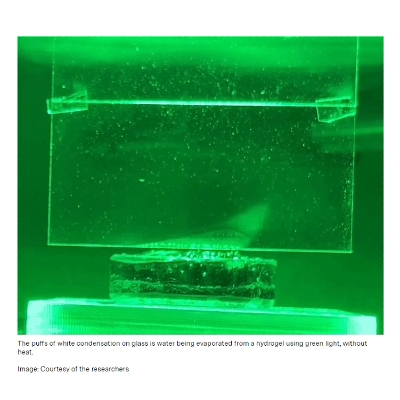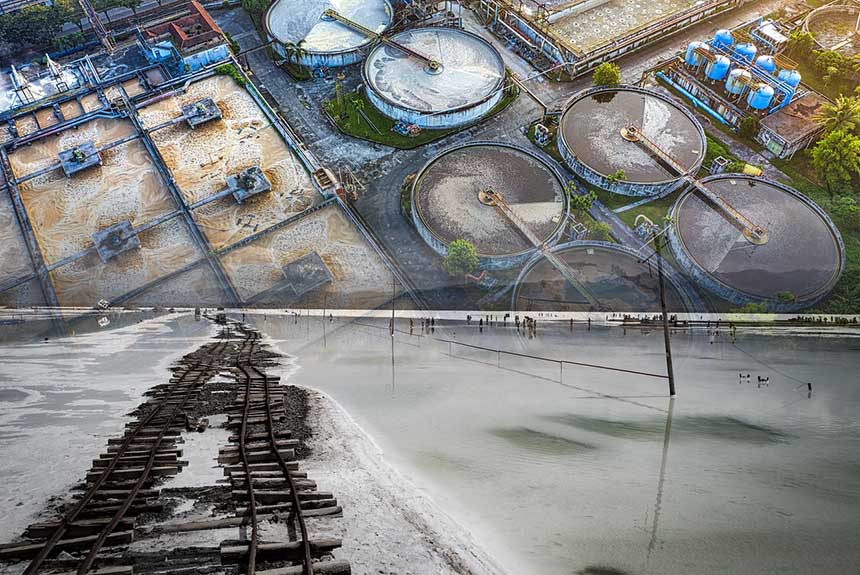Desalination removes salt from the sea or brackish water to make it suitable for a range of ‘fit for use’ purposes, including drinking. Thus, it can be used as a climate adaptation solution in countries with high water stress or water scarcity.
However, desalination is an energy-intensive process, and to avoid maladaptation, the energy used for desalination must be from renewable or low-carbon sources.
Climate change exacerbates water scarcity problems, and desalinating water can be a practical and feasible solution in these water-scarce areas. According to the World Health Organization, over 2.1 billion people live in water-stressed areas, which is projected to increase in the following decades due to rapid population growth and contamination of freshwater reserves.
Climate change will also exacerbate the problem by making droughts and heat waves longer and more intense. Most water-scarce countries are in Asia, Africa and the Middle East. Desalinating water in these countries remains a viable solution for providing sustainable water supplies.
The viability of desalination plants depends on the cost of producing water and the amounts it could generate throughout the plant’s life. Thanks to continuous improvements in plant materials and technology, the cost of desalination plant materials decreases while efficiency increases. Among the many desalination methods, reverse osmosis is the most widespread method worldwide because of its cost-effectiveness and high efficiency.
According to Medium, the cost of desalinated water through reverse osmosis had decreased from $10 per cubic meter decades ago to $1-$2. The cost is projected to decrease to $0.30 per cubic meter or even less within the next 5 to 10 years due to continuous technological innovations, renewable energy integration, and improved energy efficiency.
Breaking down the cost of desalination of large-scale reverse osmosis globally, energy accounts for the highest cost share at 44%. But what if there is another way to lower energy requirements or even find an alternative way to desalinate water with minimum energy input, potentially making the desalination process much cheaper?
Light can trigger a water evaporation rate of up to three times
Massachusetts Institute of Technology (MIT) researchers made a surprising discovery: Light can triple the evaporation rate. This finding can help improve climate adaptation.

PHOTO CREDIT: MIT News
We all know that heat causes evaporation. We see water vapour breaking free from a hot mug of coffee or any hot drink. This is how the Earth’s water cycle works; heat energy from the sun makes the water molecules on the surface escape, transforming them into gas or water vapour.
But what if there is another factor that makes water evaporate? A team from MIT made a surprising discovery – they found that light can directly cause water to evaporate faster – up to three times than the theoretical limit based on heat alone. They called this phenomenon “photomolecular effect”.
The study findings from MIT’s Department of Mechanical Engineering team are published in a paper in PNAS led by MIT postdoc Yaodong Tu and professor of mechanical engineering Gang Chen, along with four other co-authors.
They came across this discovery when they were investigating solar evaporation for desalination. Because water alone does not absorb heat – that is why we can see clearly through many feet of clean water, they would place dark, light-absorbing materials in a water container to help convert light to heat.
They came across a study finding of another work claiming that they achieved double the evaporation rate using hydrogels, a material similar to Jell-O, to hold the water without adding black particles. Although sceptical, they tested this out, and to their astonishment, they found similar results, confirming that light is a key factor that increased the evaporation rate.
The study’s co-author Gang says that though water does not absorb light as well as the hydrogel material, combining the two they become strong absorbers, allowing the material to utilize the energy of the solar photons efficiently and exceed the thermal limit without the need for any dark dyes for absorption.
They conducted more experiments to explore this phenomenon further, exposing the hydrogel to different colours and wavelengths and simulated sunlight while monitoring the hydrogels’ temperature to ensure no added heat was involved.
They also find that the evaporation rates are wavelength-dependent, peaking at a specific shade of green light, or 520nm. They also tried introducing heat using electric current, which was the same amount of energy as in other tests but without light. The result shows that evaporation rates could not surpass the thermal limit until simulated sunlight was introduced, confirming that light is the cause of extra evaporation.
Study’s application in real-life problems
The study’s findings can have real-life implications, particularly in climate change adaptation and industrial applications such as water desalination and cooling spaces. The newly discovered phenomenon can eliminate the need to convert sunlight into heat as an intermediate step, reducing costs. It could also play a role in the formation and evolution of fog and clouds, making it essential to incorporate it into climate models to improve accuracy.
Chen says that, in principle, it may be possible to increase the water limit produced by solar desalination, which is currently 1.5 kilograms per square meter, by as much as three- or fourfold using this light-based approach. “This could potentially lead to cheap desalination” (Chandler, 2023).
Yaodong Tu, the study’s lead author, also mentions that this phenomenon might have potential applications in evaporative cooling systems, where the phase change could be used to create an efficient solar cooling system.
Read the study: Plausible photomolecular effect leading to water evaporation exceeding the thermal limit
Sources:
Seawater desalination: a method for combating scarcity? (2024). Iberdrola. Retrieved from https://www.iberdrola.com/innovation/desalination
Herber, G. (2024, February 2). Exploring the Most Cost-Effective Desalination Technologies and Processes. Medium. Retrieved from https://medium.com/@desalter/exploring-the-most-cost-effective-desalination-technologies-and-processes-051a545f1911
Chandler, L. (2023, October 31). In a surprising finding, light can make water evaporate without heat. Retrieved from https://news.mit.edu/2023/surprising-finding-light-makes-water-evaporate-without-heat-1031



Leave a Reply